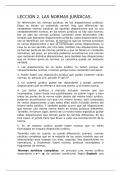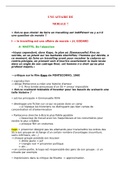Greece in the Bronze Age
Greece turned into a significant center of action on the Mediterranean during the
Bronze Age. The Bronze Age in Greece began with the Cycladic human
advancement, an early Bronze Age culture that emerged southeast of the Greek
central area on the Cyclades Islands in the Aegean Sea around 3200 B.C.
Two or three hundred years after the fact, the Minoan development arose on the
island of Crete. The Minoans are viewed as the primary high level human progress
in Europe.The Minoans were brokers who sent out wood, olive oil, wine and color
to local Egypt, Syria, Cyprus and the Greek central area. They imported metals and
other unrefined substances, including copper, tin, ivory and valuable
stones.Around 1600 B.C., the Mycenaean civilization rose on the Greek central
area, and their way of life thrived during the late Bronze Age. Major Mycenaean
power places included Mycenae, Thebes, Sparta and Athens.
Numerous Greek legends are attached to Mycenae. In Greek folklore, the city of
Mycenae was established by Perseus, the Greek legend who decapitated Medusa.
The Mycenaean lord Agamemnon attacked Troy during the Trojan War of Homer's
"Iliad," however there are no verifiable records of a Mycenaean ruler of that
name.The Bronze Age, a period that endured approximately 3,000 years, saw
significant advances in friendly, financial, and mechanical advances that made
,Greece the center of movement in the Mediterranean. History specialists have
recognized three unmistakable civilizations to distinguish individuals of the time.
These civilizations cross-over in time and match with the major geographic locales
of the Greece. The Cycladic human progress created in the islands of the Aegean,
and all the more explicitly around the Cyclades, while the Minoans involved the
huge island of Crete. Simultaneously, the progress of the Greek central area is
delegated "Helladic". The Mycenaean time depicts Helladic progress towards the
finish of the eleventh c. BCE and is additionally the called "Time of Heroes" since
it is the wellspring of the legendary legends and stories like Hercules, the Iliad and
the Odyssey.
Every one of the three human advancements of the Bronze Age shared numerous
qualities practically speaking, while simultaneously were particular in their way of
life and demeanor. The Minoans are viewed as the main high level progress of
Europe, while Mycenaean culture had a lot of impact with its legends and Greek
language on what later turned into the wonder of Classical Greece.
Either by fortune or power, the Mycenaeans outlived both individuals of Cyclades
and the Minoans, and toward the tenth c's end. BCE extended their impact over the
Greek central area, the islands of the Aegean and Ionian oceans, Crete, and the
shoreline of Asia Minor. Nonetheless, after 1100 BCE Mycenaean civilization
stopped either through inward conflict, or outside intrusions (the Dorian attacks
,have been proposed as a potential clarification), or through a mix of the two, it isn't
known without a doubt.
How is known is that the broad harm treated the Mycenaean development required
300 years to invert. We refer to this period as "the Dark Ages" somewhat in light
of the fact that individuals of Greece fell into a time of fundamental food with no
critical proof of social turn of events, and mostly in light of the fact that the
deficient verifiable record delivers our own perspective on the period rather
incomplete.The progress from Neolithic to Bronze Age in the Aegean was set apart
by changes in ceramics and different parts of material culture. These progressions
might mirror the appearance in Crete and the Cyclades of new individuals from
lands farther east carrying information on metalworking with them. In Crete and
the islands, the progressions that initiated the Bronze Age were pretty much
contemporary with the start of dynastic times in Egypt. The Bronze Age in the
Peloponnese seems to have started later affected by pioneers from the islands. The
Bronze Age in focal Greece and Thessaly might have started even later. Developed
kinds of metal apparatuses seem to have been current significantly before the finish
of the Neolithic there.Flourishing metal-utilizing societies were laid out by the
center of the third thousand years in Crete, the Cycladic islands, and the southern
piece of the central area. Every one of these three societies had its own
unmistakable qualities; notwithstanding, they shared a lot of practically speaking,
, and their people groups might have spoken something very similar or comparative
non-Greek dialects. Many spot names all through the Aegean — quite ones
finishing off with - nt-and - ss-, like Corinth and Knossos — appear to mirror when
a gathering of related dialects with plausible Anatolian affinities was spoken there
before the presentation of Greek. Countless words came to be embraced into Greek
from this previous language bunch.
Lerna and different settlements on the central area were in the long run encircled
by gigantic walls with projecting pinnacles, and adjoining islands like Aigina or
Syros in the Cyclades additionally had transcended walls with trap doors. Houses
with a few rooms were being developed in many pieces of the Aegean at this point,
and structures at Knossos and at Vasilikí in Crete have been recognized as the
homes of nearby rulers. The alleged House of Tiles at Lerna, obliterated by fire
close to the furthest limit of the period, seems to have been a significant
concentration for the local area. An enormous square shape two stories high, with a
roofed overhang higher up, the construction takes its name from the heated dirt
tiles tracked down in its vestiges. These little, level tiles are remembered to have
come from an inclining rooftop and might be the earliest rooftop tiles known.
Comparable tiles were recuperated from an immense roundabout design of a
similar period at adjoining Tiryns, of which just a segment has been unearthed, as
Greece turned into a significant center of action on the Mediterranean during the
Bronze Age. The Bronze Age in Greece began with the Cycladic human
advancement, an early Bronze Age culture that emerged southeast of the Greek
central area on the Cyclades Islands in the Aegean Sea around 3200 B.C.
Two or three hundred years after the fact, the Minoan development arose on the
island of Crete. The Minoans are viewed as the primary high level human progress
in Europe.The Minoans were brokers who sent out wood, olive oil, wine and color
to local Egypt, Syria, Cyprus and the Greek central area. They imported metals and
other unrefined substances, including copper, tin, ivory and valuable
stones.Around 1600 B.C., the Mycenaean civilization rose on the Greek central
area, and their way of life thrived during the late Bronze Age. Major Mycenaean
power places included Mycenae, Thebes, Sparta and Athens.
Numerous Greek legends are attached to Mycenae. In Greek folklore, the city of
Mycenae was established by Perseus, the Greek legend who decapitated Medusa.
The Mycenaean lord Agamemnon attacked Troy during the Trojan War of Homer's
"Iliad," however there are no verifiable records of a Mycenaean ruler of that
name.The Bronze Age, a period that endured approximately 3,000 years, saw
significant advances in friendly, financial, and mechanical advances that made
,Greece the center of movement in the Mediterranean. History specialists have
recognized three unmistakable civilizations to distinguish individuals of the time.
These civilizations cross-over in time and match with the major geographic locales
of the Greece. The Cycladic human progress created in the islands of the Aegean,
and all the more explicitly around the Cyclades, while the Minoans involved the
huge island of Crete. Simultaneously, the progress of the Greek central area is
delegated "Helladic". The Mycenaean time depicts Helladic progress towards the
finish of the eleventh c. BCE and is additionally the called "Time of Heroes" since
it is the wellspring of the legendary legends and stories like Hercules, the Iliad and
the Odyssey.
Every one of the three human advancements of the Bronze Age shared numerous
qualities practically speaking, while simultaneously were particular in their way of
life and demeanor. The Minoans are viewed as the main high level progress of
Europe, while Mycenaean culture had a lot of impact with its legends and Greek
language on what later turned into the wonder of Classical Greece.
Either by fortune or power, the Mycenaeans outlived both individuals of Cyclades
and the Minoans, and toward the tenth c's end. BCE extended their impact over the
Greek central area, the islands of the Aegean and Ionian oceans, Crete, and the
shoreline of Asia Minor. Nonetheless, after 1100 BCE Mycenaean civilization
stopped either through inward conflict, or outside intrusions (the Dorian attacks
,have been proposed as a potential clarification), or through a mix of the two, it isn't
known without a doubt.
How is known is that the broad harm treated the Mycenaean development required
300 years to invert. We refer to this period as "the Dark Ages" somewhat in light
of the fact that individuals of Greece fell into a time of fundamental food with no
critical proof of social turn of events, and mostly in light of the fact that the
deficient verifiable record delivers our own perspective on the period rather
incomplete.The progress from Neolithic to Bronze Age in the Aegean was set apart
by changes in ceramics and different parts of material culture. These progressions
might mirror the appearance in Crete and the Cyclades of new individuals from
lands farther east carrying information on metalworking with them. In Crete and
the islands, the progressions that initiated the Bronze Age were pretty much
contemporary with the start of dynastic times in Egypt. The Bronze Age in the
Peloponnese seems to have started later affected by pioneers from the islands. The
Bronze Age in focal Greece and Thessaly might have started even later. Developed
kinds of metal apparatuses seem to have been current significantly before the finish
of the Neolithic there.Flourishing metal-utilizing societies were laid out by the
center of the third thousand years in Crete, the Cycladic islands, and the southern
piece of the central area. Every one of these three societies had its own
unmistakable qualities; notwithstanding, they shared a lot of practically speaking,
, and their people groups might have spoken something very similar or comparative
non-Greek dialects. Many spot names all through the Aegean — quite ones
finishing off with - nt-and - ss-, like Corinth and Knossos — appear to mirror when
a gathering of related dialects with plausible Anatolian affinities was spoken there
before the presentation of Greek. Countless words came to be embraced into Greek
from this previous language bunch.
Lerna and different settlements on the central area were in the long run encircled
by gigantic walls with projecting pinnacles, and adjoining islands like Aigina or
Syros in the Cyclades additionally had transcended walls with trap doors. Houses
with a few rooms were being developed in many pieces of the Aegean at this point,
and structures at Knossos and at Vasilikí in Crete have been recognized as the
homes of nearby rulers. The alleged House of Tiles at Lerna, obliterated by fire
close to the furthest limit of the period, seems to have been a significant
concentration for the local area. An enormous square shape two stories high, with a
roofed overhang higher up, the construction takes its name from the heated dirt
tiles tracked down in its vestiges. These little, level tiles are remembered to have
come from an inclining rooftop and might be the earliest rooftop tiles known.
Comparable tiles were recuperated from an immense roundabout design of a
similar period at adjoining Tiryns, of which just a segment has been unearthed, as











